You Can Easily Grow These 10 Vegetables at Home. Here’s How
Did you know that you can grow fresh organic mint in just water? Check out other easy hacks like these to grow your own vegetables at home. #UrbanGarden

Are you someone who is tired of filling their grocery bags with shrivelled, frozen vegetables dubbed as ‘organic’? You are definitely not alone. In the pursuit of fresh, organic produce, city-dwellers often have to suffice themselves with overpriced and subpar vegetables, greens and fruits from the supermarkets or grocery delivery apps.
But, there is an easy solution. Why not grow your own vegetables? Before you dismiss the idea with the fear of having a ‘brown thumb’, we have for you some easy hacks to create your own vegetable garden.
All you need are some planters, some potting soil, seeds or saplings and a little patience.
You have got yourself a little garden that can fill up your plates with healthy food before you know it.
The Better India talked to two urban gardeners, Anu Chhabra from Bengaluru and Ganga Nath from Kolkata, who shared tips and tricks of growing the ten easiest vegetables in your rooftop, balcony or kitchen garden.
1. Chilli
This quintessential ingredient of Indian cuisine is extremely easy to grow. You can procure the seeds for the same from dried red chillies in your kitchen.
- Mix equal amounts of cocopeat, compost and perlite (or tiny pieces of thermocol).
- Put the potting mix in a small pot and soak it in ample water overnight.
- Next day, press each of the chilli seeds gently into the soft soil and cover it with mulch/hay.
- Water daily till the seeds germinate into tiny saplings.
- As soon as the leaves appear, transfer each sapling to a bigger pot with a height of at least 20 inches.
- Water daily till the plant flowers. Reduce the frequency of watering after flowering happens. Harvest fresh chillies when fruited.

2. Tomato
From a bowl of garden salad to a delectable gravy, tomato is indispensable in almost every cuisine. Here’s how you can easily grow your own tomatoes at home.
- Prepare the potting mix by mixing sand, red soil, compost, cocopeat and neem cake in the ratio 30:20:20:20:10.
- Sow the tomato seeds in the potting mix, equidistant from one another. Sprinkle with water after sowing.
- Mulch the seeds with hay/dried leaves and cover partially to create a semi-greenhouse effect.
- Continue spraying water every 2-3 days till the seeds sprout. After four sets of true leaves appear, transplant the sapling into a big pot and stake it with sticks on all 4 sides.
- Add a handful of compost to the tomato plant once in a week till it flowers.
- Since the tomato plant is vulnerable to attacks by mealybugs and leaf miners, spray diluted neem oil in dish-wash solution once in 15 days.

3. Brinjal
Craving for that fragrant baingan ka bharta or a regal plate of kathirikai kulambu? Now you can handpick the brinjals straight from your home garden. Here’s how:
- Soak brinjal seeds overnight and sow them in well-drained soil.
- Prepare a potting mix with 30 per cent soil, 20 per cent compost, 20 per cent cocopeat, 20 per cent sand and 10 per cent neem cake powder.
- Once the saplings reach a height of 5-6 inches, transplant them into the new potting mix. You can accompany them with companion plants like tomato, cabbage, broccoli, etc.

- After the plant has started flowering, control the amount of water given daily.
- Fold the flowers and gently rub them to induce pollination.
- For nutrition, add a handful of compost/banana peels/Jeevamrutham/eggshells/Panchagavya alternatively to the plant once every week.
4. Coriander
Who doesn’t love fragrant and fresh coriander on a steaming bowl of gravy or on a tropical salad? These tiny leaves are bound to add a beautiful aroma every dish they are added to. And it’s extremely easy to grow them on your own.
- Take a handful of coriander seeds and press them slightly to break them into two. Soak the broken seeds in water overnight.
- Mix sand, red soil, cocopeat, neem cake and compost in equal quantities to make the potting mix.
- Drain this potting mix well and scrape lines through it to sow the seeds.
- Spread the seeds evenly along the scraped lines. Cover the seeds lightly with soil and dry leaves. Sprinkle with a little water.
- After the seeds have sprouted, spray with diluted buttermilk or Panchagavya once every 15 days. Do not overwater the plants.
- Harvest the Coriander once it’s ready.
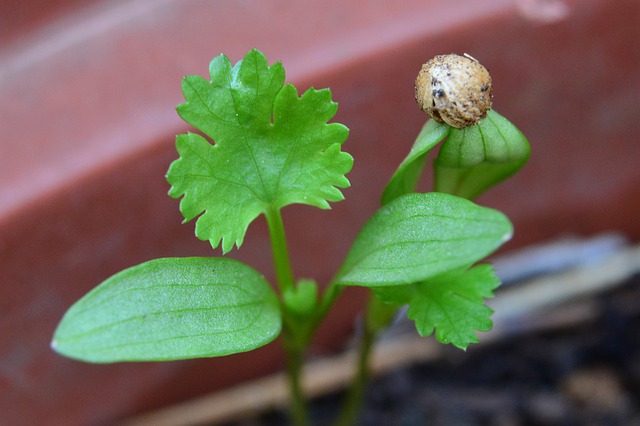
5. Bitter gourd
Unpopular opinion – there is nothing that can match up to crisp fried bitter gourd with piping hot rice! And growing the vegetable is also a cakewalk.
- Soak the seeds overnight and sow them in small pots, such that only two seeds are sowed together.
- Prepare a potting mix with 30 per cent red soil, 20 per cent compost, 20 per cent cocopeat, 20 per cent sand and 10 per cent neem cake. Water this mix thoroughly and keep it aside.
- Gently remove a sapling from the small pot with the soil and transfer it into a bigger pot.
- Insert sticks into the soil to support the creeper.
- Keep pinching the side stems so that the main stem grows up to 6-7 feet. Add a handful of compost once every week.
- Remove the leaves near the base of the plant to avoid any infection. Pinch the tip of the plant once it reaches a height of 7-8 feet.
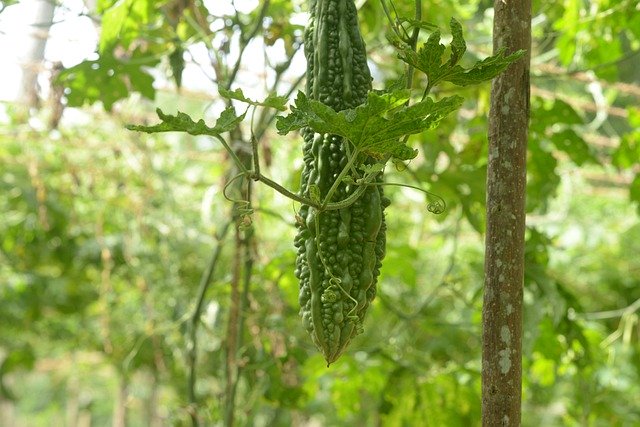
- Once the female flowers appear, hand-pollinate them with the male flowers. Female flowers can be identified by the presence of a small fruit beneath them, which is absent in the male flowers. Cover the pollinated flower to avoid attack by fruit flies.
- Harvest the bitter gourds once ready. For procuring seeds, leave one or two bitter gourds on the plant itself till they are completely yellow.
6. Cucumber
High in potassium and Vitamin K, cucumber is another indispensable element in almost all world cuisines. Consumed raw, this crunchy goodness is better when it comes fresh from your garden.
- Soak cucumber seeds overnight before sowing them.
- Use a good quality potting mix with one part each of soil, compost, perlite and cocopeat.
- Using thumb, make 5 mm depressions in the soil to sow the cucumber seeds. Cover with loose soil and water gently so as not to expose the seeds. The soil should be kept moist at all times.
- After the seeds germinate and at least four true leaves appear, transfer the saplings into bigger pots.
- Expose the plant to direct sunlight at least 6-8 hours in a day.
- Manual pollination by hand might be required to ensure fruiting. Harvest the fruits when ready.
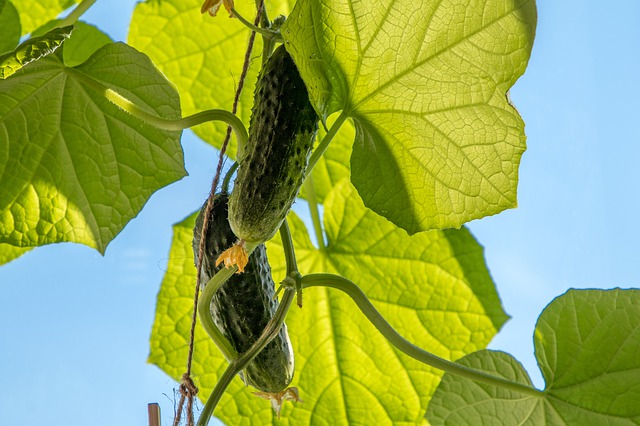
7. Mint
Perhaps the easiest plant in the list to nurture at home since you do not even need soil for it!
- Keep aside a few sprigs of mint from a fresh bunch you got from the market.
- Choose a healthy, thick stem and make a cut at around 15 cm along the length, below the node. Remove a few leaves gently from the cutting.
- Put a few such cuttings in a glass of clean water. Keep indoors, away from sunlight.
- In a few days, the cuttings will sprout new leaves and grow roots. You can use the leaves directly or transplant the saplings into fresh potting soil.
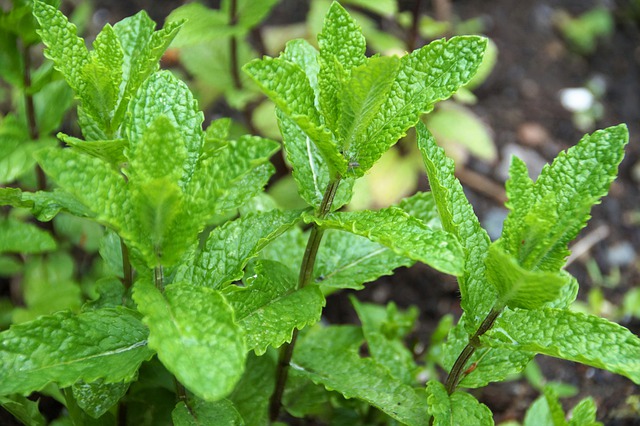
8. Spinach
From baby spinach in salads to spinachy goodness in pasta alfredo, the iron-packed powerhouse leafy green is a must-have in your home garden. The upside is that it grows really fast too!
- Prepare a potting mix using well-drained loamy soil enriched with organic compost.
- Sow the spinach seeds gently in rows or blocks around 1-1.5 feet apart, cover loosely with soil and water well till germination.
- Once true leaves start appearing, space out the saplings around six inches apart to allow ample space for each plant.
- Keep under direct daytime exposure to sunlight or partial shade.
- Pick the leaves whenever needed. Leaves will continue to regrow until the end of the season.
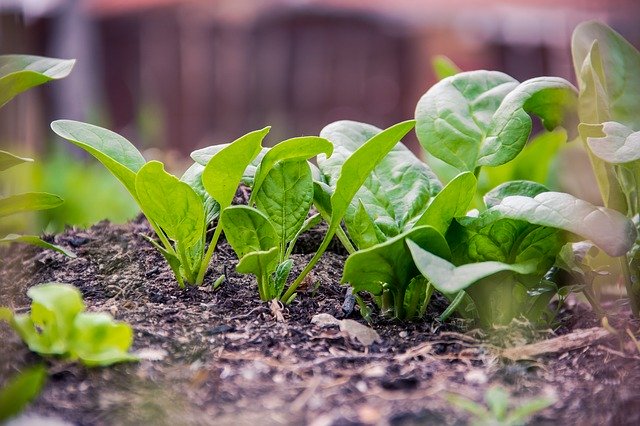
9. Radish
Quite the underrated ingredient in the Indian culinary scene, radish can find itself relished in a variety of ways depending upon the region. What few people know is that it is super easy to grow at home as well.
- Use a well-draining red potting soil rich in organic homemade compost and mixed with cocopeat.
- Sow the seeds by making dents of around 0.5 inches in the soil, at a gap of 1 inch.
- Once the seeds germinate in about a week, separate the seedlings around 2 – 4 inches apart. Ideally, potting containers of around 20 litres should be used for growing the long, white variety of indigenous radish.
- Add vermicompost after about a week. Water regularly
- Harvest after about a month. In some cuisines of India (eg. Bengali), radish leaves are also consumed often as a delicious saga.
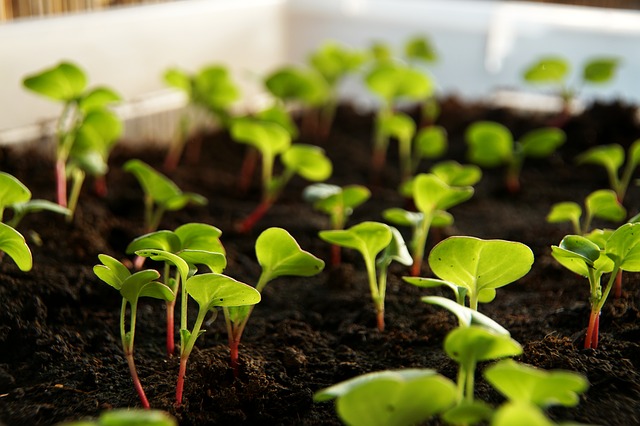
10. Capsicum
The more popular cousin of chilli has now become an integral element in Indian kitchens, and urban gardens as well. Know how to grow them.
- For preparing the potting mix, add cocopeat/peat moss, vermiculite (or perlite) and neem cake to the potting soil.
- Best time to sow capsicum seeds are late winter, spring and the beginning of summer. It thrives well in moderate temperatures.
- Use a seedling tray to sow the seeds initially and cover the tray with a plastic wrap to retain the soil moisture.
- Once the seeds germinate in 10-15 days, keep the tray in a sunlit area after removing the plastic cover.
- Transplant the saplings in larger containers once true leaves appear. Cover the soil loosely with potting mix.
- Maintain a strict watering schedule. Use a water-soluble organic fertilizer every two weeks.
- Fresh capsicum will grow fully in around 60 to 90 days.
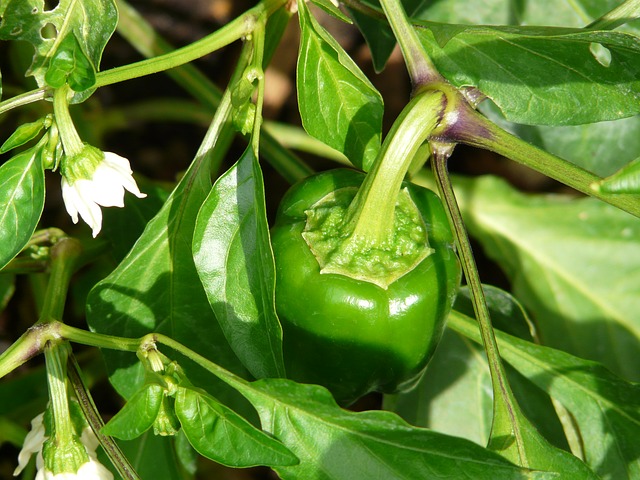
Share your story of urban gardening with us. Write to [email protected].
(Edited by Saiqua Sultan)
Like this story? Or have something to share?
Write to us: [email protected]
Connect with us on Facebook and Twitter.
If you found our stories insightful, informative, or even just enjoyable, we invite you to consider making a voluntary payment to support the work we do at The Better India. Your contribution helps us continue producing quality content that educates, inspires, and drives positive change.
Choose one of the payment options below for your contribution-
By paying for the stories you value, you directly contribute to sustaining our efforts focused on making a difference in the world. Together, let’s ensure that impactful stories continue to be told and shared, enriching lives and communities alike.
Thank you for your support. Here are some frequently asked questions you might find helpful to know why you are contributing?


This story made me
-
97
-
121
-
89
-
167













